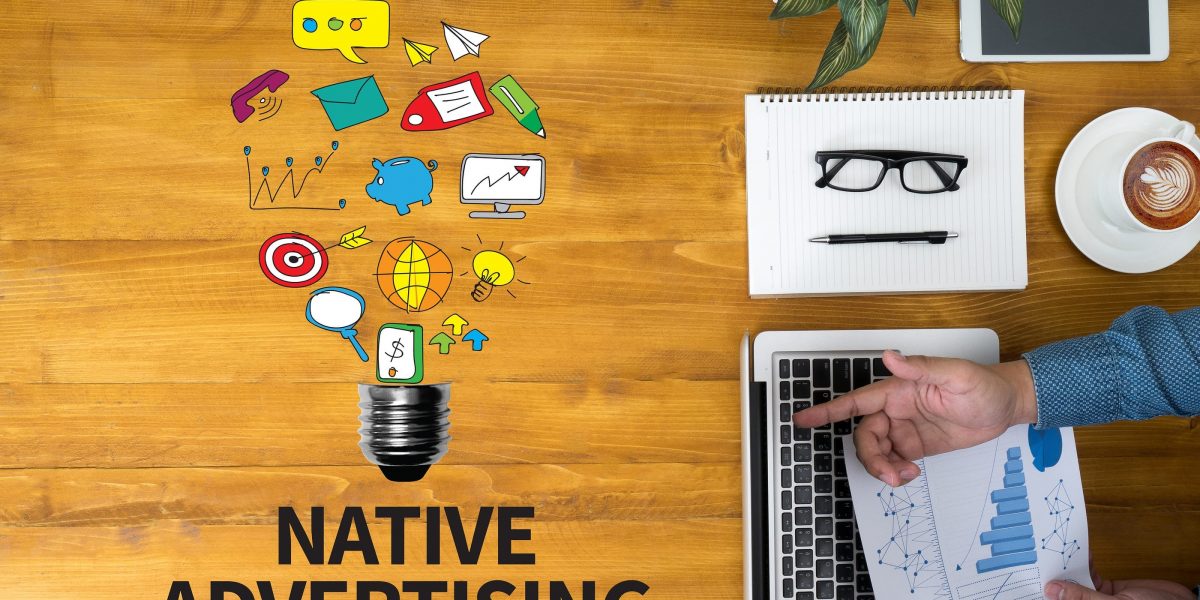While use of native advertising skyrockets, it remains a mystery to many business owners and entrepreneurs…
According to the Interactive Advertising Bureau, native ad spending is expected to hit nearly $14 billion by 2016.
And it’s a major untapped source of profits for most of my business coaching clients…
So what is it, anyway?
Well, native advertising is a form of paid online media that matches the form and function of the content that surrounds it.
For example, here’s what a traditional online ad might look like:
These are typically heavy with branding elements and designed to spread awareness, as well as get you to buy now or start shopping.
It’s easy to identify these types of ads because… well… they look like ads.
As such, they get ignored by most readers. The average click-through rate of display ads, across all formats and placements, is just 0.06% (Source: Display Benchmarks Tool).
The big benefit of native ads is that they don’t look like advertisements. Instead, they appear and function like content.
Take a look:
Notice how this retailer’s ad blends in with the editorial around it…
Aside from the usual channels, take time to check out a few other alternative digital marketing networks that could boost your advertising campaigns (while costing you a lot less.)
Native Advertising #1: Sponsored Content
Keep in mind, this is just one type of native advertising. In this case, it’s sponsored content.
You’ll notice this type of native advertising on major publisher websites such as Yahoo, BuzzFeed, the New York Times, and Forbes.
If you want to run sponsored content, be prepared to make a hefty investment, especially on the bigger media sites.
Native Advertising #2: Recommended Content
Another option to consider is recommended content. It looks something like this:
In this case, your “ad” is again formatted to look just like the editorial around it.
Just as with sponsored content, publications receive a fee for displaying these ads. The advantage with this type of native advertising is that you can get exposure on major media for just pennies per click (especially on mobile and tablet devices).
Content discovery networks such as Outbrain, Taboola, Sharethrough, and Content.ad (you have many options to choose from) make this process easy. You just submit your content, determine your budget, and pick a geographic area.
Your ads then start running on websites such as CNN, People, and ESPN.
You can even set a daily budget limit, so your maximum cost each day doesn’t get out of control.
Native Advertising #3: In-Feed Social Ads
Finally, the third type of native advertising is in-feed social ads. You’ll find these – as the name suggests – on social media platforms such as Twitter, Facebook, LinkedIn, and YouTube.
Here’s an example from Twitter:
Facebook:
LinkedIn:
And YouTube:
In-feed social ads are probably the easiest place to test the native adverting waters. They’re cheap, easy to set up, and deliver quick feedback – so you can experiment without much risk.
For instance, with Facebook, you can start by simply running a promoted post from your Facebook page.
Remember, though, the key is to display content that delivers value. A promoted post like this is an obvious ad:
While a promoted post like this offers value:
Again, although it’s an ad, this post offers the type of content people seek out on social networks. As a result, this ad is more likely to get clicks and be consumed by readers.
All “The Points Guy” did was create a blog post. You, of course, can do the same thing.
Check out the page that displays after you click The Points Guy’s link: http://thepointsguy.com/2015/08/why-i-love-amex-business-platinum/
Notice how he delivers valuable content first, and then works in an offer at the end. In this case, the offer includes a link to register for the credit card.
In your post, find natural opportunities to link to a sales page or an opt-in offer. Just make sure you deliver extensive value before asking for action.
The Points Guy’s readers see enough value in his post that they’ve shared nearly 400 times on Facebook. Imagine having advertising with such high perceived value that others promote it for you!
This is an added bonus of using native advertising.
Okay, so once your blog post is ready (and includes an attention-grabbing photo), it’s time to start driving traffic. Add your new content to your Facebook page and include additional content that encourages people to click your link.
The next step is to then “boost” your post.
For just a few bucks (as little as $5), you can target your post to specific audiences. Investing a little money ensures your content displays beyond just your fans’ newsfeeds.
(NOTE: I suggest also using a link shortener such as Bitly or Improvely on your call-to-action links in your blog post. That way you can monitor click-throughs and know if your promoted post is driving clicks to your offer.)
For businesses on a limited budget, this process on Facebook is the easiest way to begin using native advertising. After all, once you know your ad works on Facebook, you can expand to the content delivery networks or other in-feed social options.
In your corner,
Charlie










